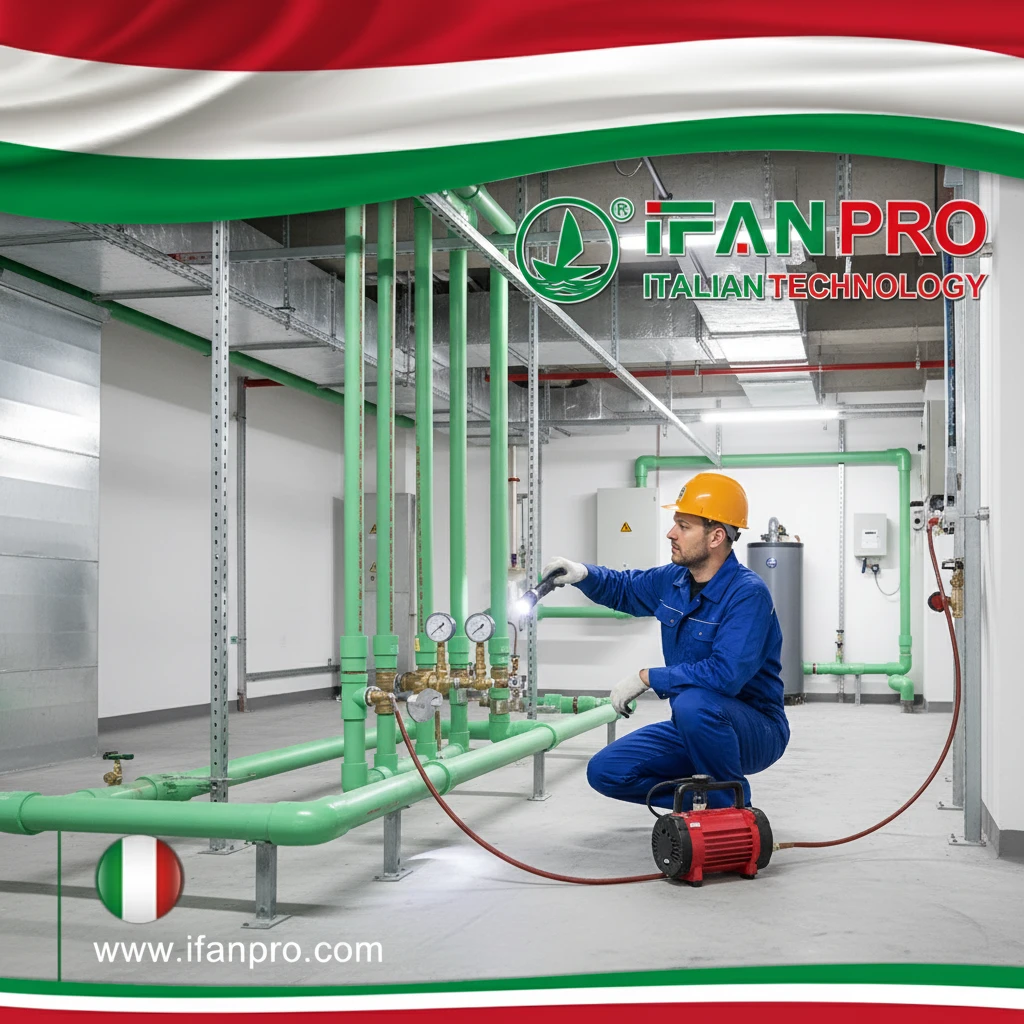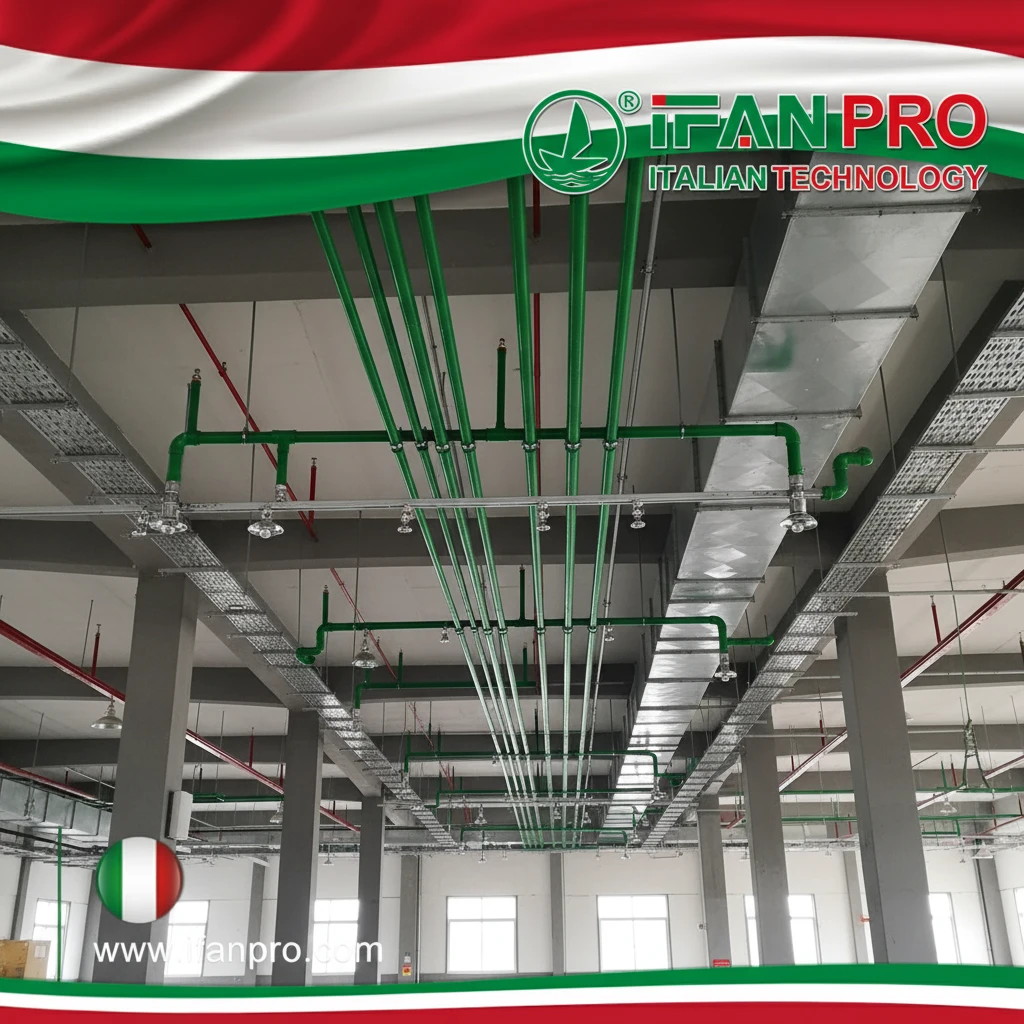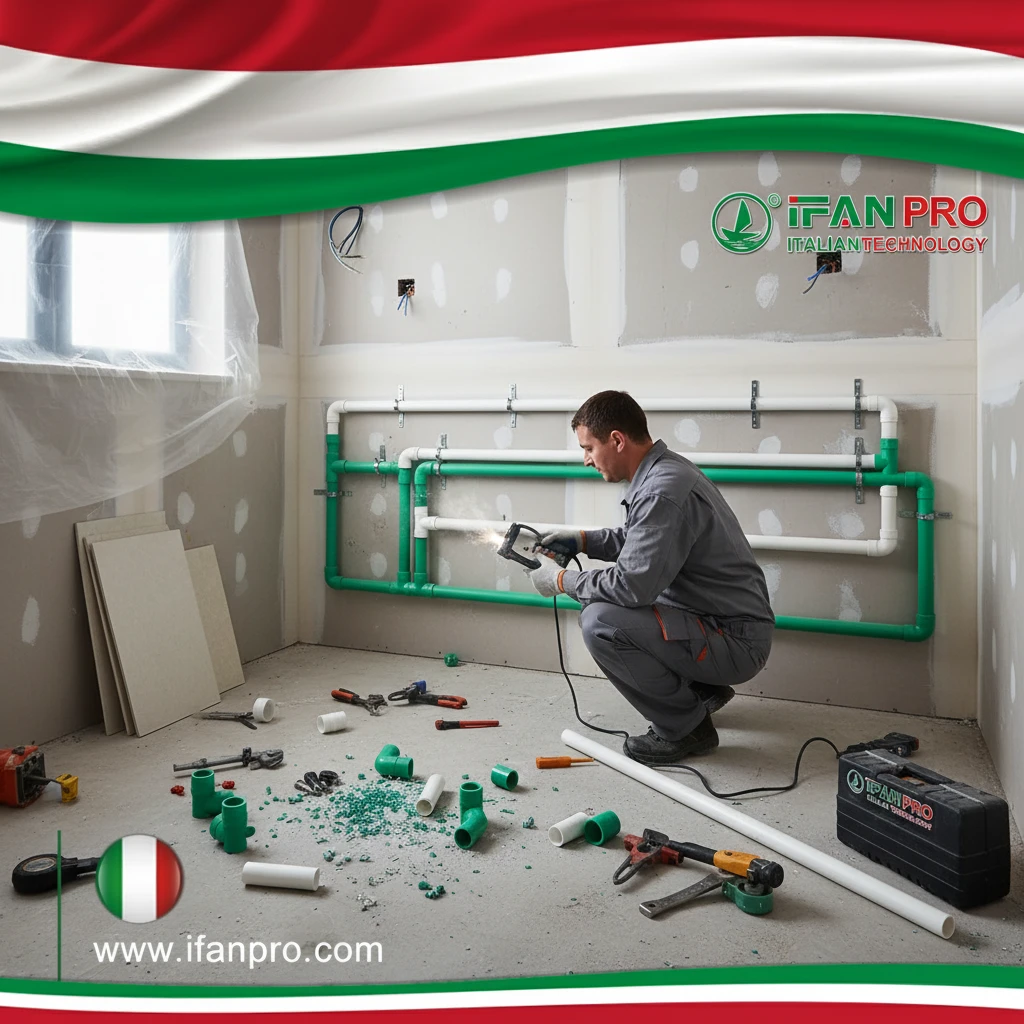Throughout my career, I’ve witnessed numerous plumbing failures resulting from improper pipe joining techniques. These experiences have taught me to always emphasize the importance of correct PPR fusion methods.
PPR pipes are joined using heat fusion techniques that create permanent bonds between pipes and fittings. The primary methods are socket fusion and electrofusion, both forming monolithic, leak-proof joints by melting the PPR material at connection points and allowing it to cool into a single, continuous piece.
Understanding these joining methods proves essential for creating reliable, long-lasting plumbing systems. Now, let me guide you through the necessary tools, processes, and techniques.
What Tools and Equipment Are Needed for PPR Pipe Joining?
Acquiring the proper tools represents the initial step toward successful PPR joining. I discovered this through challenging experiences when using inadequate equipment resulted in failed joints.
The essential tools for PPR pipe joining include a fusion welding machine with temperature control, pipe cutters, cleaning supplies, marking tools, and supporting equipment. Socket fusion requires heating plates with specific diameter attachments, while electrofusion needs special fittings and a power supply unit.

Core Tool Requirements
Proper tool selection significantly impacts joint quality. Let’s examine the essential equipment categories:
The fusion welding machine stands as the most crucial tool. This equipment maintains precise temperature control, typically between 260°C and 280°C, which ensures proper melting without material damage. Additionally, the machine includes copper-coated heating plates and attachments designed for different pipe diameters.
Several other tools complete the required toolkit. Specialized pipe cutters create perfectly square ends without burrs. Meanwhile, cleaning supplies like isopropyl alcohol and clean cloths are vital for degreasing surfaces. Marking tools such as depth gauges help indicate correct insertion depth. Furthermore, supporting equipment including clamps and alignment tools maintain pipe stability during fusion.
Specialized Equipment by Method
This table compares tools needed for different fusion techniques:
| Tool Type | Socket Fusion Requirements | Electrofusion Requirements |
|---|---|---|
| Heating Equipment | Heating plates with copper attachments | Electrofusion control unit |
| Power Supply | Standard electrical outlet | Dedicated power source with proper voltage |
| Special Fittings | Standard PPR fittings | Electrofusion fittings with integrated heating elements |
| Additional Tools | Beveling tool (for large diameters) | Brushes for connector cleaning |
Practical Tool Recommendations
Based on IFAN’s extensive experience, we suggest these practical guidelines:
First, prioritize quality pipe cutters since poor cuts cause misalignment and weak joints. Each cut must remain perfectly square to ensure even heating and proper fusion.
Second, consistently perform cleaning steps because invisible contaminants like skin oils can compromise joint integrity. Therefore, always utilize isopropyl alcohol and clean cloths for surface preparation.
Third, implement regular equipment maintenance by cleaning heating plates after each use and periodically calibrating welding machines. Proper maintenance prevents uneven heating and potential joint failures.
What is the Step-by-Step Process for Heat Fusion Joining PPR Pipes?
Following the correct sequence proves vital for successful joints. I’ve refined this reliable method through extensive field experience.
The step-by-step process involves cutting pipes square, cleaning all surfaces, marking insertion depth, heating components simultaneously, joining them while molten, and maintaining stability during cooling. Critical stages include: preparation, cleaning, marking, heating, connecting, and cooling under consistent pressure without movement.

Detailed Procedural Guide
Let me explain the exact process IFAN employs for flawless joints:
Step 1: Preparation and Cutting
Begin by measuring and marking pipe lengths accurately. Employ specialized PPR pipe cutters to achieve perfect 90-degree cuts. Then verify that cut ends are smooth and burr-free. For pipes exceeding 50mm diameter, slight edge beveling might be necessary.
Step 2: Cleaning and Degreasing
Meticulously clean pipe ends and fitting sockets using isopropyl alcohol and lint-free cloths. This process eliminates dust, grease, and moisture contamination. Importantly, never omit this step since contamination represents a primary cause of joint failure.
Step 3: Marking Insertion Depth
Apply depth gauges or markers to indicate proper pipe penetration into fittings. This ensures correct insertion and prevents pipes from bottoming out inside fittings.
Heating and Fusion Procedure
Step 4: Heating Phase
Configure your welding machine to appropriate temperatures (typically 260°C-280°C). When indicators show readiness, simultaneously press pipe ends and fittings onto heated attachments. Maintain steady pressure until melt beads form around edges.
Step 5: Joining and Alignment
Promptly remove pipes and fittings from heaters and push them together smoothly until reaching depth marks. However, avoid twisting or turning components. Immediately align any markings since adjustments become impossible once cooling commences.
Step 6: Cooling and Solidification
Keep joints firmly positioned without movement during initial cooling phases. The following table indicates standard cooling durations:
| Pipe Diameter (mm) | Heating Time (seconds) | Cooling Time (minutes) |
|---|---|---|
| 20 | 5-7 | 2-3 |
| 32 | 8-12 | 4-6 |
| 50 | 18-25 | 6-8 |
| 75 | 30-40 | 8-10 |
Critical Success Elements
Most errors occur during heating and cooling stages. For instance, ensure sufficient heating time for proper melting while avoiding overheating that degrades materials. Similarly, never hasten cooling processes since any movement during this phase permanently weakens joints.
Consistent practice develops proficiency. Consequently, we recommend creating multiple test joints before actual installations. At IFAN, we supply comprehensive training materials to help installers perfect these techniques.
How Do Socket Fusion and Electrofusion Methods Differ for PPR Pipes?
Selecting appropriate methods depends on specific project requirements. I’ve successfully implemented both techniques across various scenarios.
Socket fusion requires heating both pipe ends and fitting sockets on heated plates before joining, whereas electrofusion utilizes special fittings with integrated heating elements that melt connections when electrical current activates. Socket fusion offers faster standard installations, while electrofusion provides better performance in confined spaces and repair situations.

Socket Fusion Examination
Socket fusion serves as the most prevalent PPR joining method. Here’s its operational principle and optimal applications:
This technique employs heated plates with dual sides: one for pipe ends and another for fitting sockets. Both components heat simultaneously until materials become molten. Then they’re joined together, forming homogeneous connections.
Socket Fusion Advantages:
- Reduced costs since special fittings aren’t required
- Quicker processing for multiple connections
- Ideal for workshop pre-fabrication
- Established, widely understood methodology
Socket Fusion Limitations:
- Demands adequate space for welding equipment
- Challenging implementation in confined areas
- Requires consistent onsite power supply
- Needs greater skill for large-diameter pipes
Electrofusion Analysis
Electrofusion incorporates sophisticated fittings with built-in heating coils and temperature sensors. When connected to power supply units, fittings heat internally, simultaneously melting both fittings and pipes.
Electrofusion Advantages:
- Superior performance in tight spaces and repairs
- Consistent, automated procedures
- Reduced operator skill dependency
- Integrated monitoring and quality assurance
Electrofusion Limitations:
- Higher costs for specialized fittings
- Requires specific power control units
- Extended cycle times per joint
- Greater equipment investment requirements
Method Selection Framework
This table facilitates appropriate method selection:
| Application Scenario | Recommended Method | Key Reasons |
|---|---|---|
| New construction | Socket fusion | Cost-effective, faster for multiple joints |
| Tight spaces | Electrofusion | Minimal clearance requirements |
| Repair work | Electrofusion | Existing pipe removal unnecessary |
| Large diameters | Socket fusion | More economical for bigger pipes |
| Critical systems | Electrofusion | Integrated quality control |
At IFAN, we typically recommend socket fusion for standard installations and electrofusion for specialized situations. Both methods produce reliable, permanent joints when executed correctly.
How Can You Ensure Permanent Leak-Proof Connections When Joining PPR Pipes?
Quality connections demand meticulous attention to detail. I’ve identified crucial factors through years of quality control experience.
You achieve permanent leak-proof connections by maintaining impeccable cleanliness, following exact heating/cooling durations, preventing movement during cooling, implementing proper alignment techniques, and conducting systematic pressure testing. Regular training, quality materials, and strict procedure adherence ensure consistent results.

Essential Quality Control Measures
Achieving leak-proof connections requires systematic quality management:
Material Quality Verification
Begin with premium materials from reputable manufacturers like IFAN. Whenever possible, ensure pipes and fittings originate from identical material batches. Also verify all components possess proper certifications and meet relevant standards.
Environmental Management
Execute joining operations in suitable conditions. Avoid working during rainfall, high humidity, or temperature extremes. Store materials in dry conditions with UV protection before installation. Moreover, windy conditions can accelerate joint cooling, adversely affecting fusion quality.
Technical Execution Standards
Precision Implementation
Meticulously follow these technical guidelines:
- Maintain exact temperature settings for specific PPR material classifications
- Adhere to precise heating times based on pipe diameters and wall thicknesses
- Ensure flawless pipe end preparation without burrs or irregularities
- Achieve appropriate melt bead formation (1-2mm around circumferences)
Cooling Process Management
The cooling phase remains critically important. Support pipes adequately to prevent stress on fresh joints. Never accelerate cooling using water or air streams. Instead, maintain ambient conditions until joints completely crystallize.
Verification and Testing Protocols
After installation completion, implement these verification procedures:
Visual Inspection
Examine every joint for:
- Complete, uniform melt beads around entire circumferences
- Proper insertion depth (alignment with depth markings)
- Absence of gaps between pipes and fittings
- Smooth transitions at joint interfaces
Pruebas de presión
Perform systematic pressure tests according to this schedule:
| Test Type | Timing | Procedure | Acceptance Criteria |
|---|---|---|---|
| Initial Test | After installation | 1.5x working pressure for 30 minutes | No pressure drop > 0.1 bar |
| System Test | Before commissioning | 2x working pressure for 2 hours | No visible leaks or weeping |
| Final Verification | After backfilling | Working pressure for 24 hours | Stable pressure maintained |
Common Failure Prevention
Based on our experience, most leaks originate from:
- Contamination during joining (oil, dirt, moisture)
- Insufficient heating durations
- Movement during cooling phases
- Incorrect temperature settings
- Inadequate pipe preparation
At IFAN, we address these issues through comprehensive training and quality assurance protocols. Our PPR systems include detailed installation guidelines to ensure proper execution.
Conclusión
Proper PPR joining techniques create permanent, leak-proof systems that endure for decades. For reliable PPR pipes and fittings that fuse perfectly every time, choose IFAN – your trusted partner for quality plumbing solutions.














Comentarios recientes